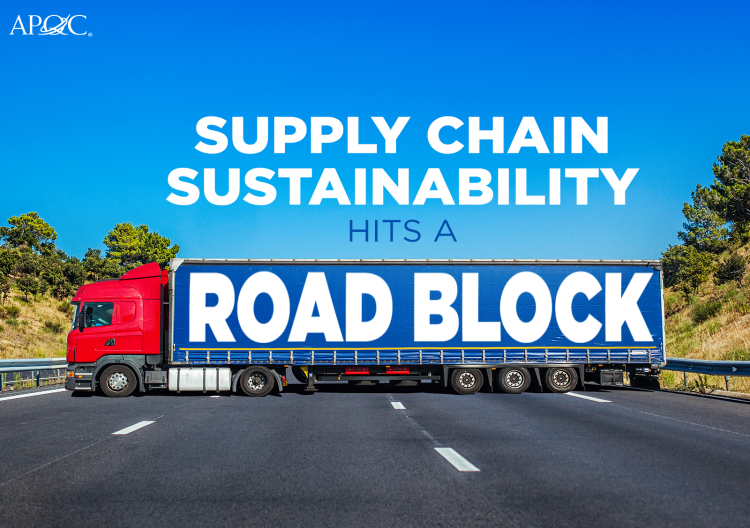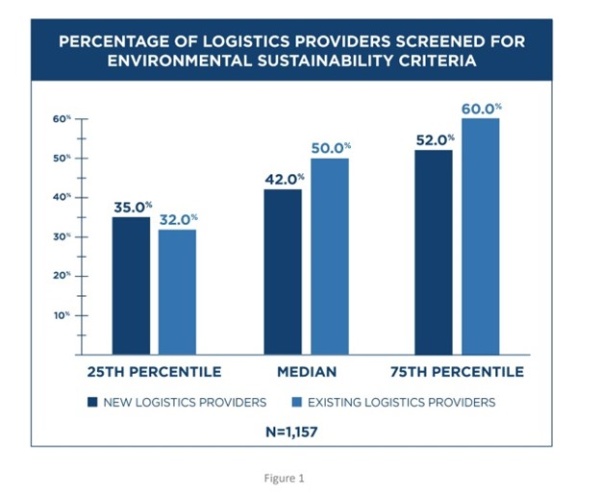
Organizations are facing pressure from multiple sources to ensure that their supply chains are operating in a sustainable manner from end-to-end. Organizations that do not currently track and assess the sustainability of their logistics providers may be left scrambling when Scope 3 disclosure requirements are no longer optional but instead become mandatory. Additionally, with anti-greenwashing laws becoming a reality, the need for this provider data as evidence of sustainability will continue to increase.
More broadly, organizations with publicly stated commitments to environmental sustainability should be prepared to demonstrate that they are actively working with their logistics providers to reduce greenhouse gas (GHG) emissions. This is not possible if these organizations only screen 50 percent (or fewer) of their logistics providers against these criteria. End-to-end supply chain transparency is rapidly becoming a business necessity, requiring organizations to evaluate critical environmental practices of new and existing logistics providers.
Organizations Can’t go it Alone on Sustainability
As organizations face increasing pressure to leverage more sustainable supply chains, it makes sense that they would want to start pushing for greater sustainability within their four walls. For example, moving to paperless processes, buying energy from renewable sources, and eliminating Styrofoam cups from the breakroom are all choices that can help to reduce an organization’s carbon footprint.
The challenge is that Scope 1 and Scope 2 emissions—that is, emissions from company facilities and those generated by an organization’s utilities providers—only account for a small part of an organization’s overall GHG emissions. Scope 3 emissions, which include logistics providers and any other indirect upstream and downstream emissions not included in Scope 2, account for 80 percent and in some cases as much as 90+ percent of an organization’s overall emissions. This means that organizations that are serious about sustainability cannot go it alone—they need to collaborate with logistics providers (and other Scope 3 partners), achieve full visibility into their practices, and regularly disclose Scope 3 emissions data to identify opportunities for reducing emissions.
APQC finds that too many organizations are missing critical opportunities to achieve greater transparency with their logistics providers. Supply chain transparency has two relevant parts. Visibility—accurately identifying and collecting data from all links in your supply chain—and disclosure—communicating that information, both internally and externally, at the level of detail required or desired. Both parts are necessary for organizations to better screen their logistics providers against criteria for environmental sustainability.
APQC has found that organizations at the 25th percentile only screen around a third of their new or existing logistics providers against sustainability criteria. Even organizations that do more screening (those in the 75th percentile) only screen around half of new logistics providers and 60 percent of existing providers (Figure 1).
These percentages are much lower than we would have expected. Given what we know about the impact of Scope 3 emissions, these organizations are likely missing a big and very important piece of the puzzle in their sustainability efforts.
APQC found that many organizations may be completely or partially in the dark about a significant source of emissions: their logistics providers. To access the full article on screening logistics providers, please click Organizations that Screen All Logistics Providers for Sustainability are in Short Supply. And to learn more on this topic, check out APQC's Environmental Sustainability: Cross-Industry, Logistics Practices Report.
To continue the conversation, follow Marisa on Twitter at @MB_APQC, or connect with her on LinkedIn.
